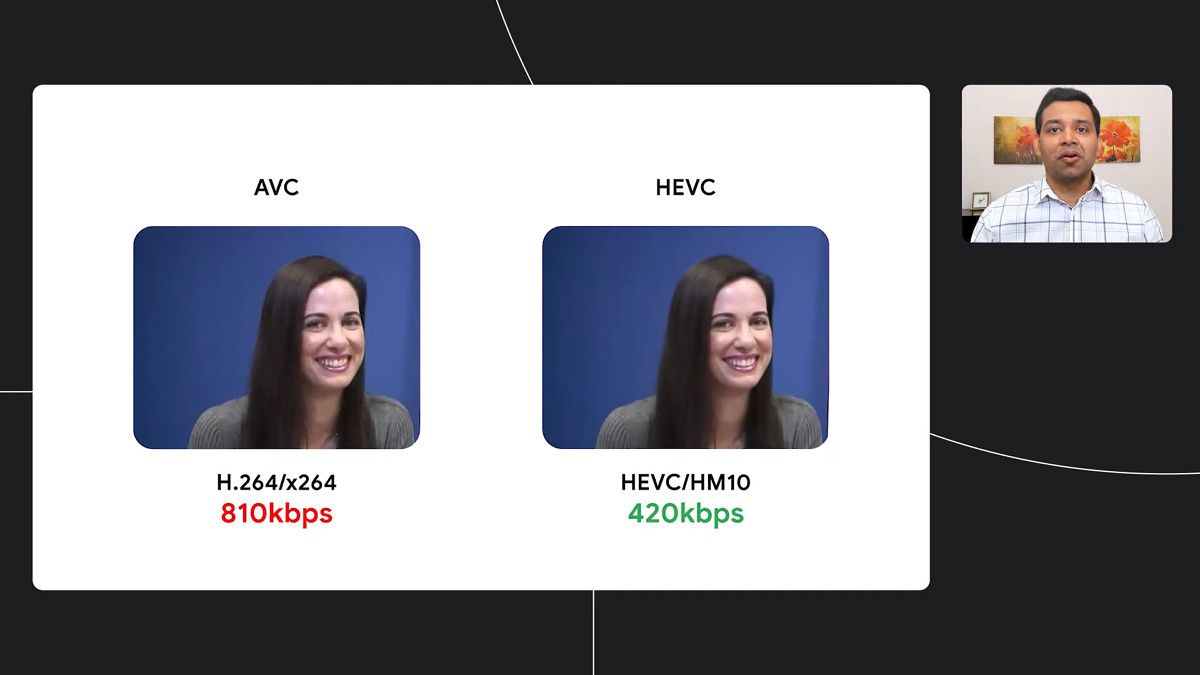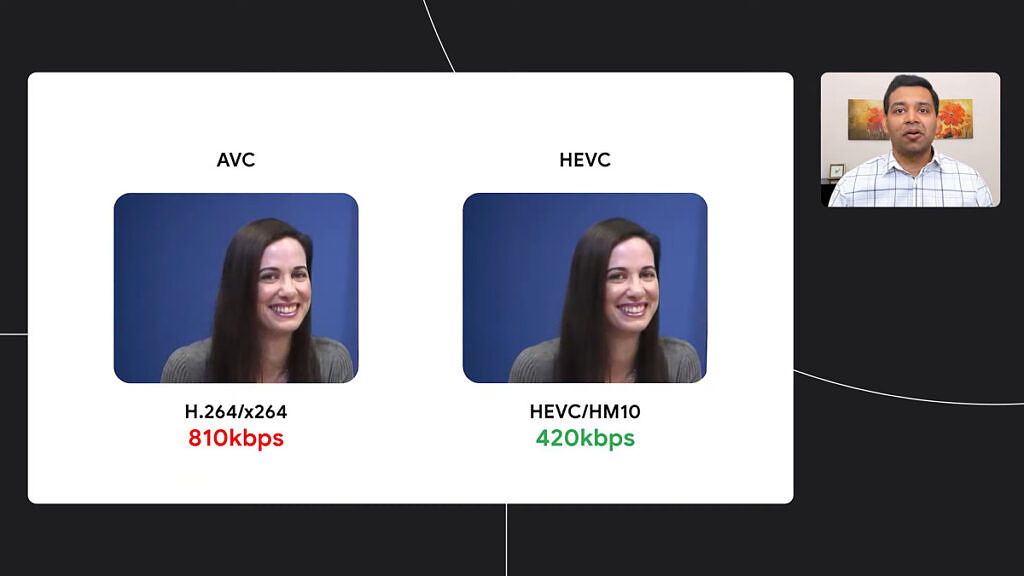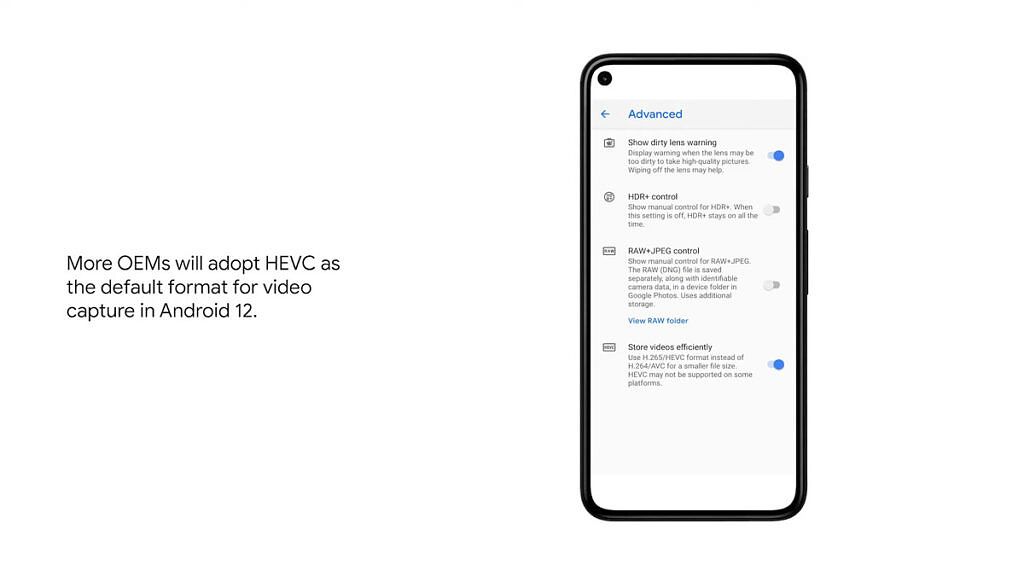During the "What's new in Android Media" session at Google I/O 2021, Google outlined the many challenges of media capture and playback and what they're doing to make things better for developers. One of the biggest challenges Google wants to solve is the massive file size of high-definition video captures. An obvious solution to this problem is to use a more efficient format to encode the video file, and it looks like some OEMs will do just that in Android 12.
Google has long recommended the use of the royalty-free AV1 codec for video encoding, but few hardware products support hardware acceleration for encoding in AV1. On the other hand, there's H.265/HEVC, a video codec that isn't royalty-free but which most high-end Android devices released in the past few years support encoding in with hardware acceleration. Compared to H.264/AVC, ie. the video codec that most camera apps on Android smartphones record in by default, Google says that H.265/HEVC can record videos at the same quality but with half the bitrate, resulting in significant file size reductions.
Decoding videos that were encoded in H.265/HEVC is also widely supported by devices running Android and other OSes, so there's no longer really an issue with recording videos in the format. The problem, however, is that HEVC recording is often disabled by default in most camera apps, and it's unlikely that most users will ever delve into the "advanced" settings menu where the toggle to enable it is typically found. For example, I opened the stock camera apps on the following high-end Android devices and found that while each offered an option to store videos more efficiently by encoding in HEVC, none of them had this toggle enabled by default:
- ASUS ZenFone 8 running ZenUI 8
- Google Pixel 4 running Android 11
- OPPO Find X2 Pro running ColorOS 11
- OnePlus 9 Pro running OxygenOS 11
- Realme X2 Pro running Realme UI 1.0
- Samsung Galaxy Note 20 Ultra running One UI 3.1
- Xiaomi Mi 10 Pro running MIUI 12
However, beginning with Android 12, Google says that more OEMs will adopt HEVC as the default format for video capture.
While Google doesn't say how many or which OEMs will make HEVC the default video capture format in their camera app, this is promising to hear nonetheless. It means the average user will no longer need to turn on HEVC encoding, a feature that many might not know even exists. By making HEVC the default video capture format, users can reduce how much space video recordings take up on local or cloud storage. Furthermore, smaller file sizes will reduce upload times on social media and other platforms where users can upload videos.
Not every Android app supports handling HEVC content, however. For those apps that don't support it, Android 12 has added a media transcoding API that automatically converts the format into H.264/AVC for better compatibility.
\r\nhttps://www.youtube.com/watch?v=pX00lybwwIk\r\n



